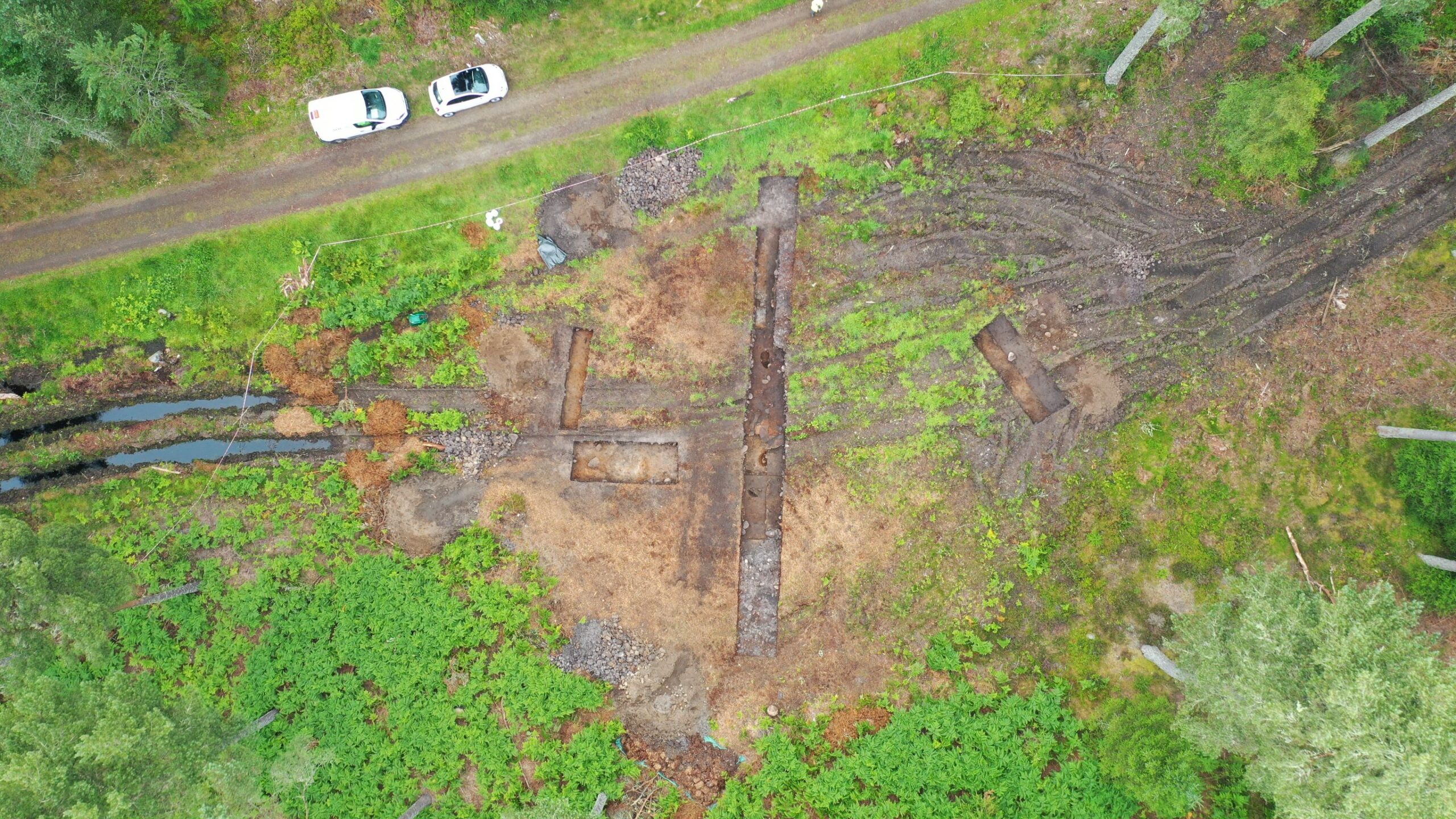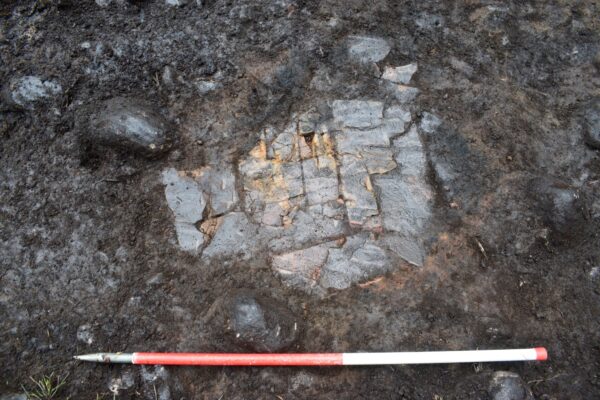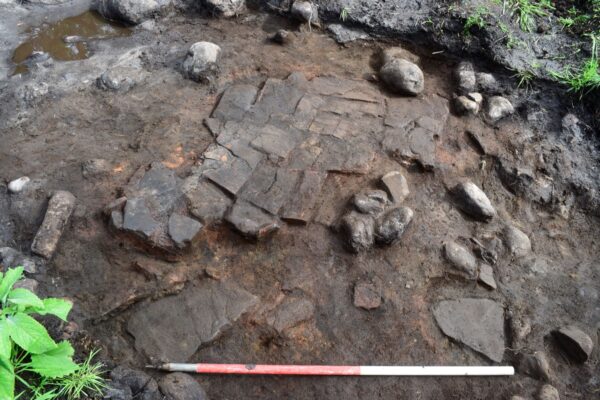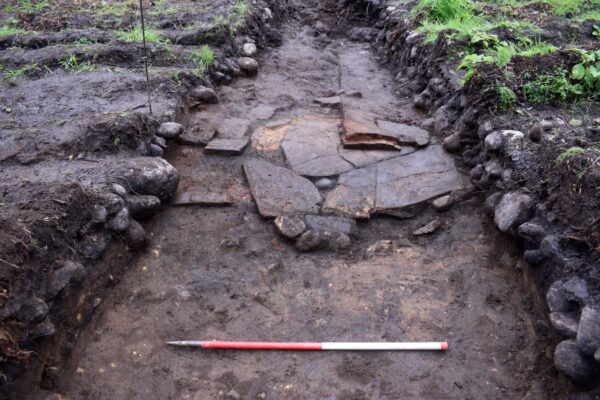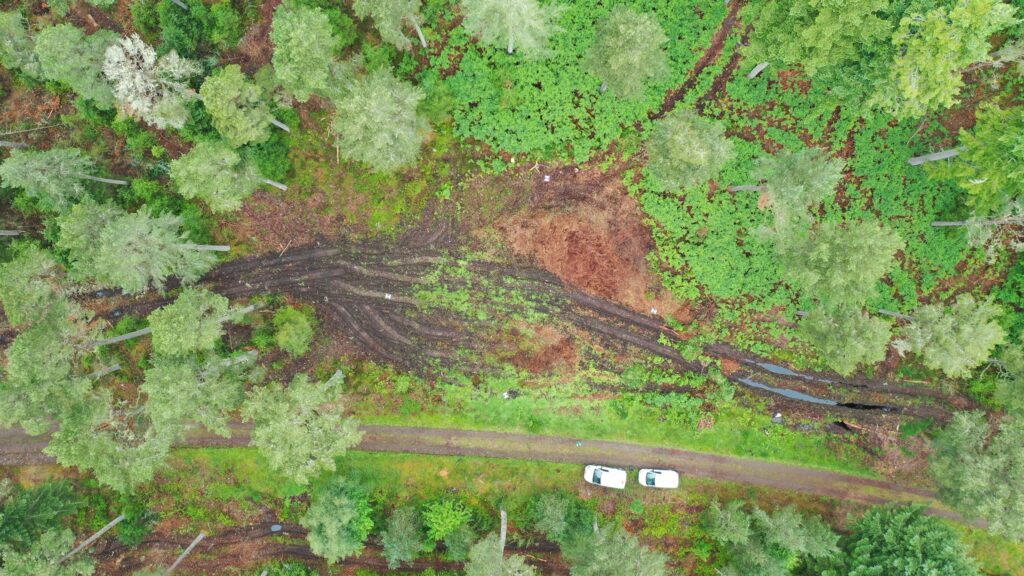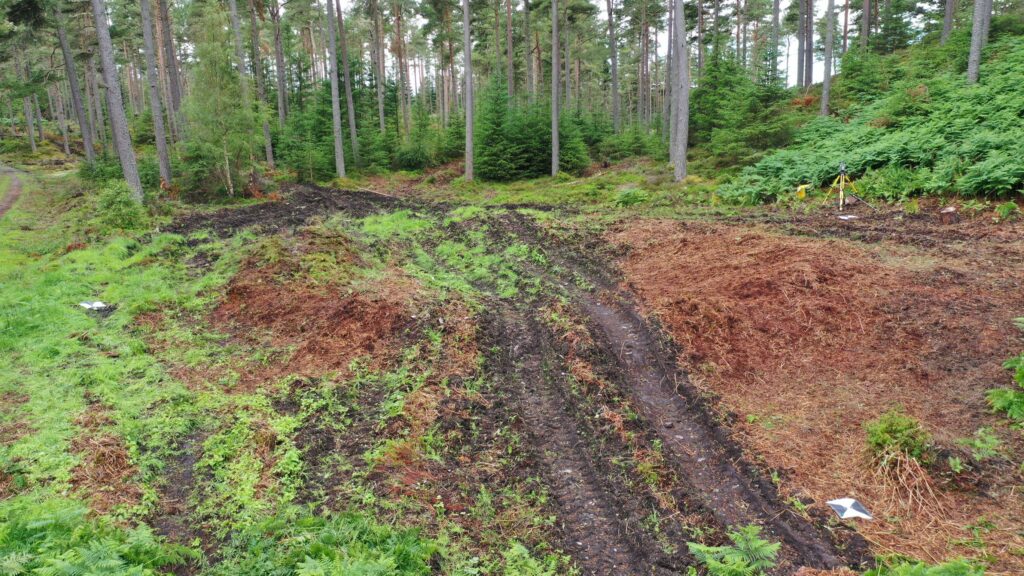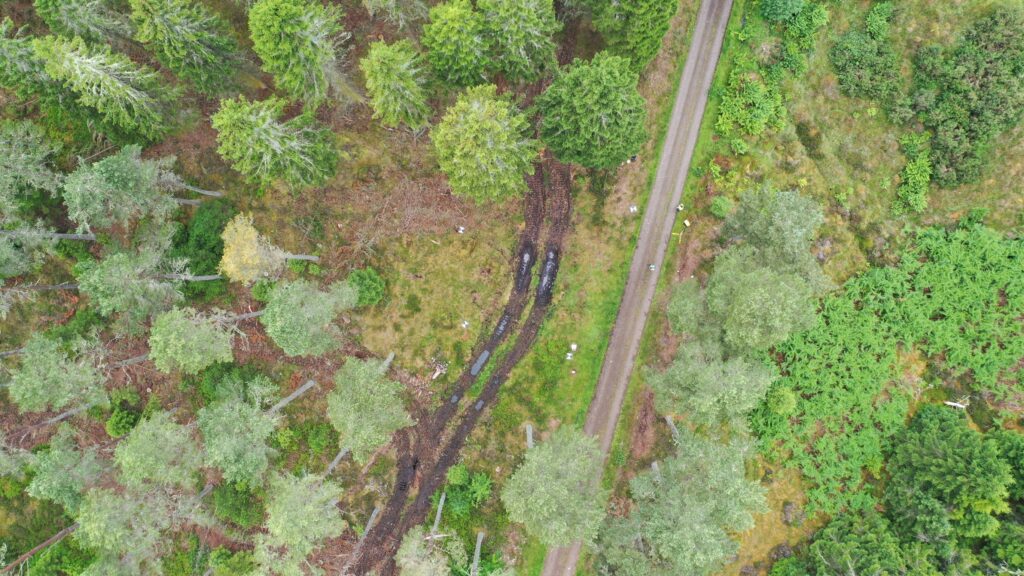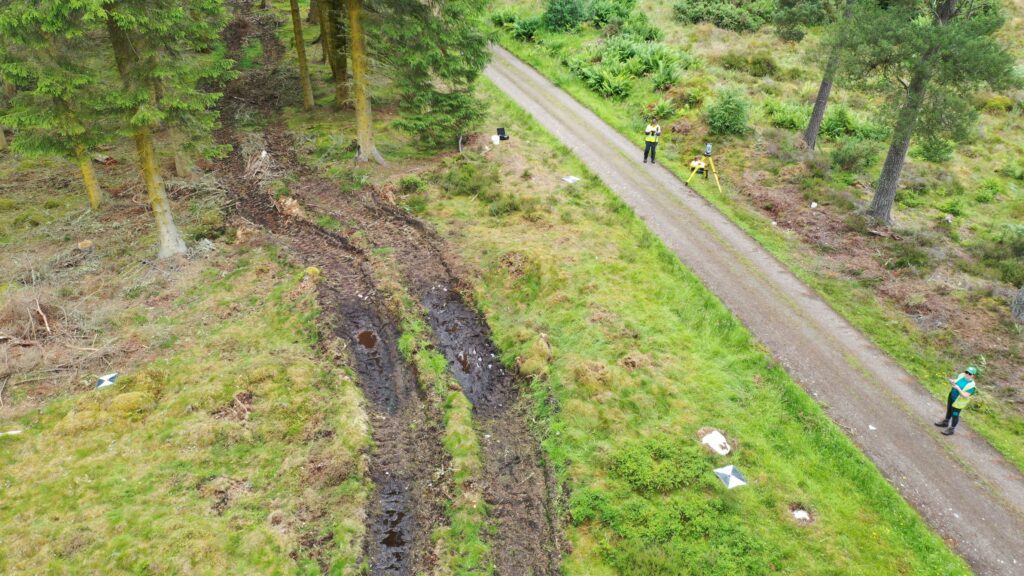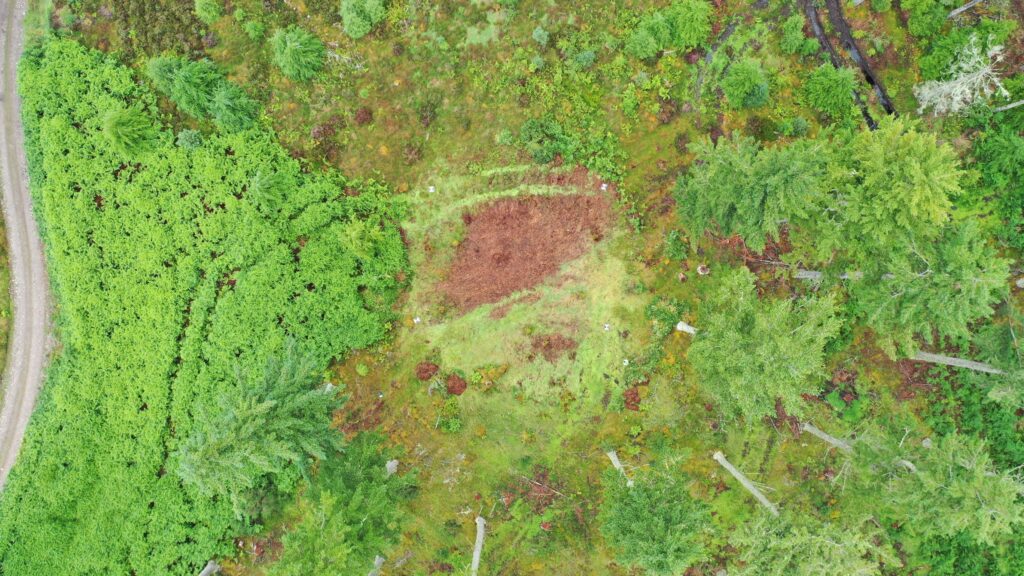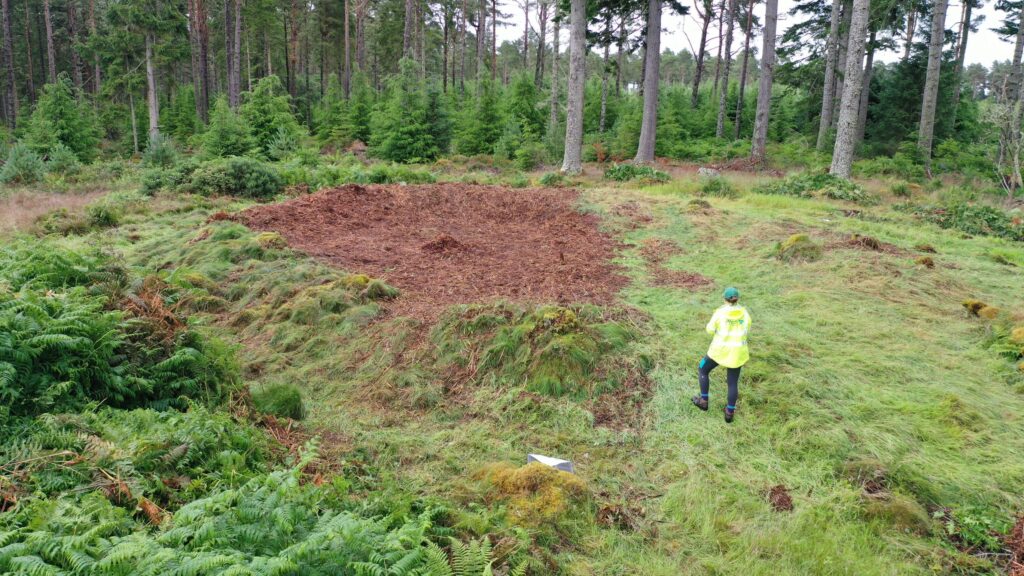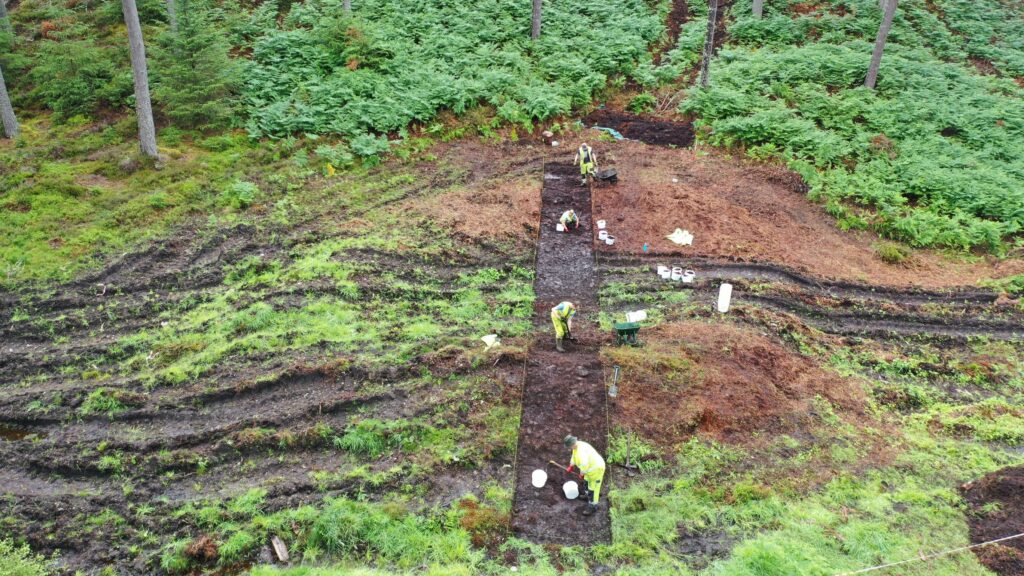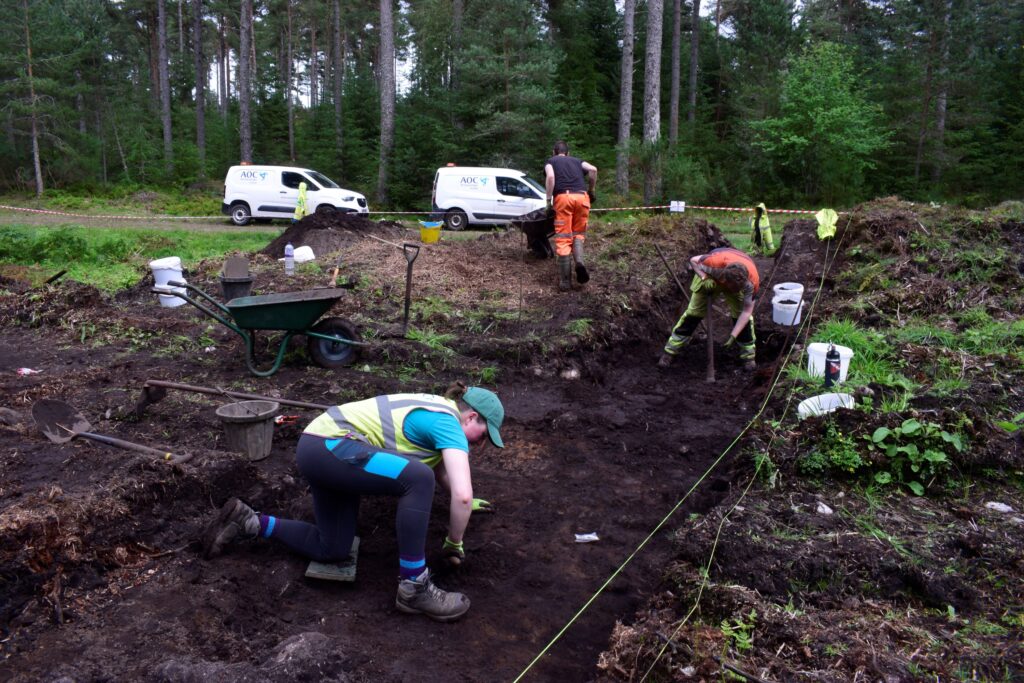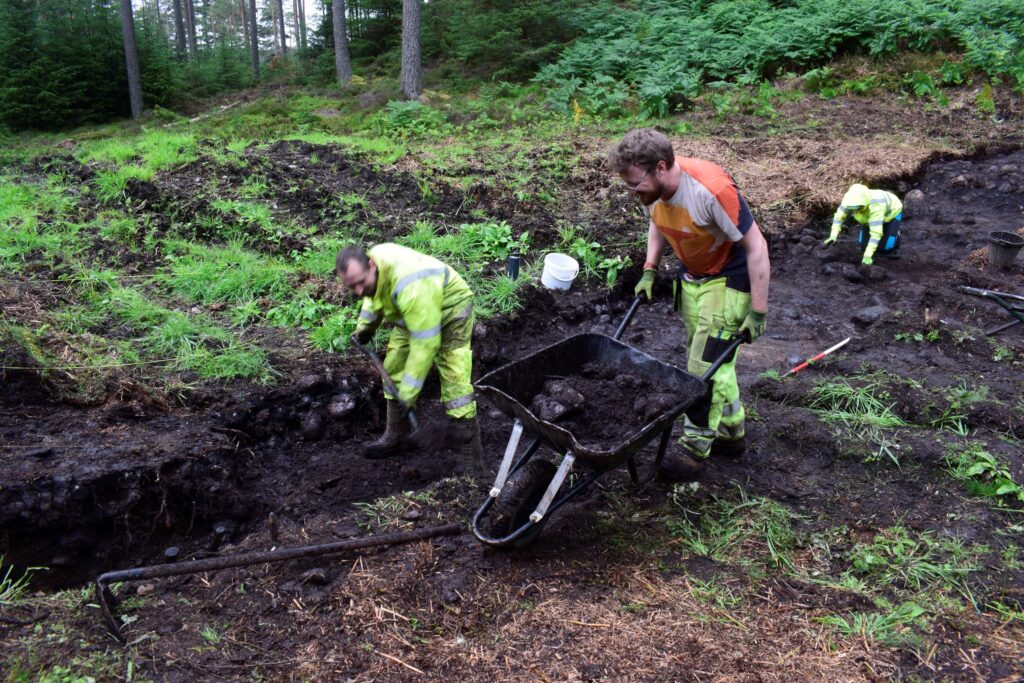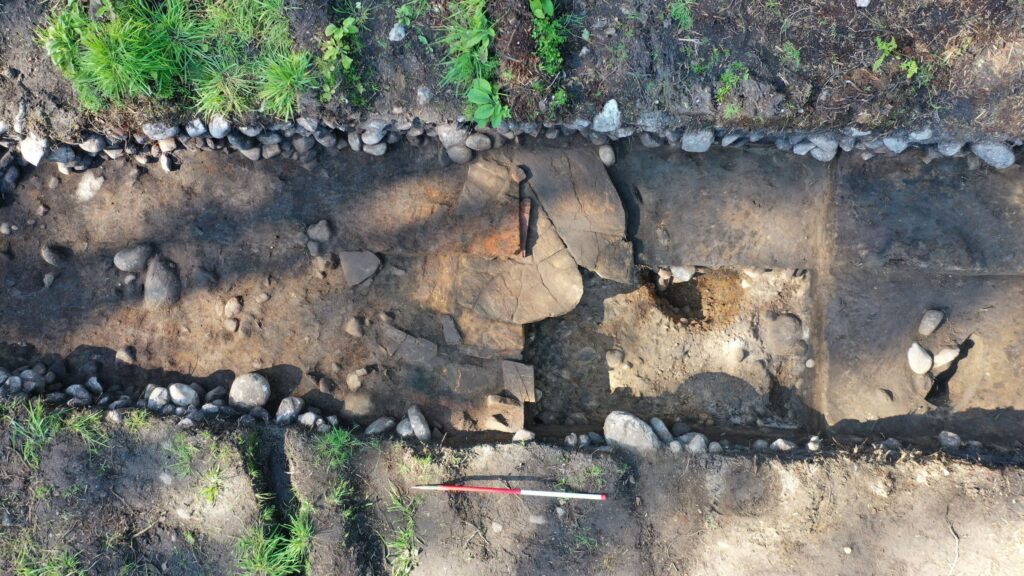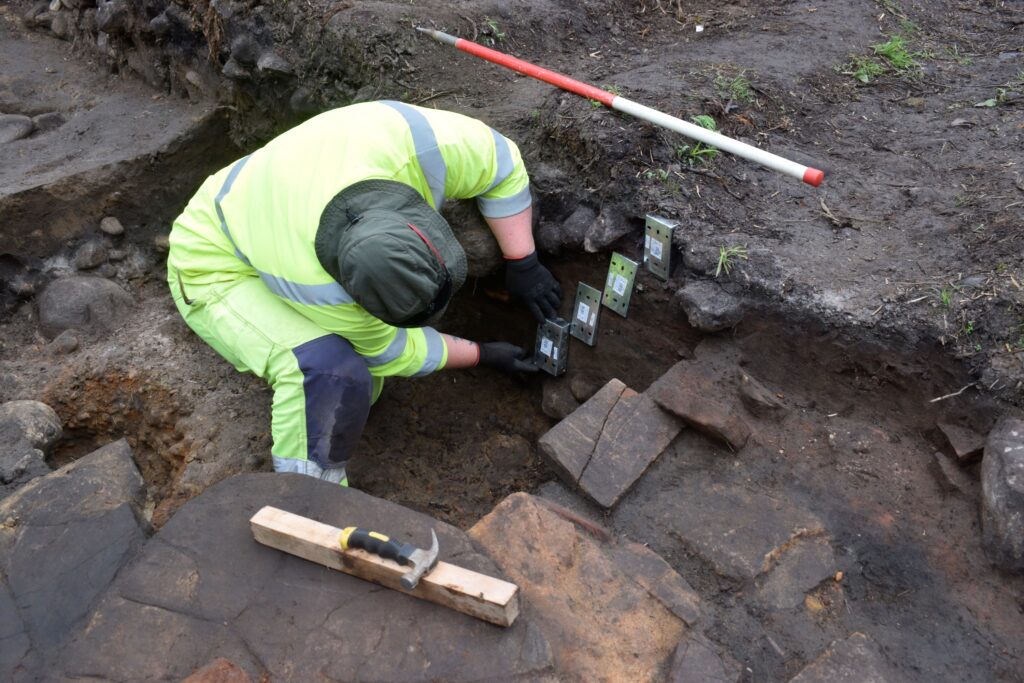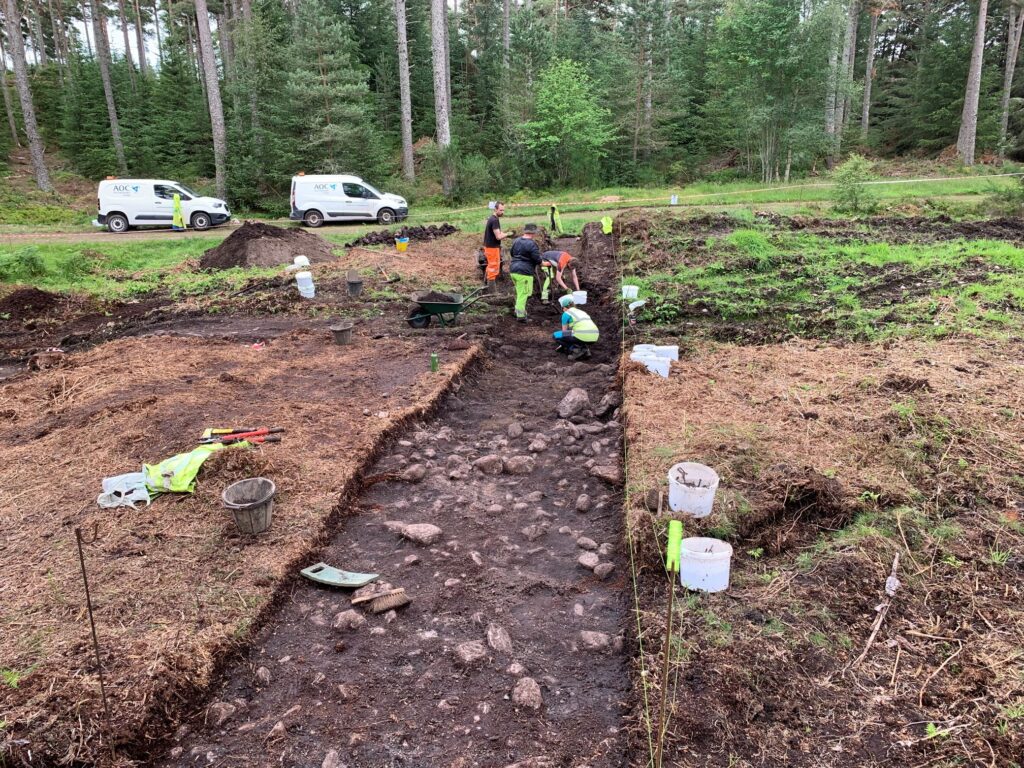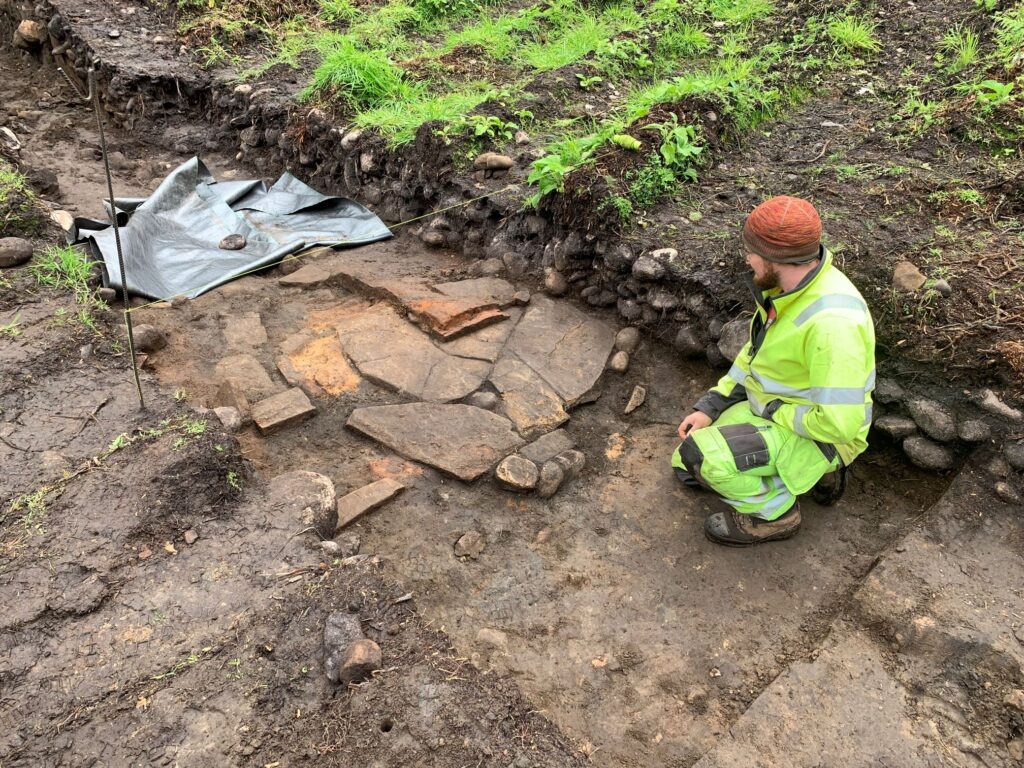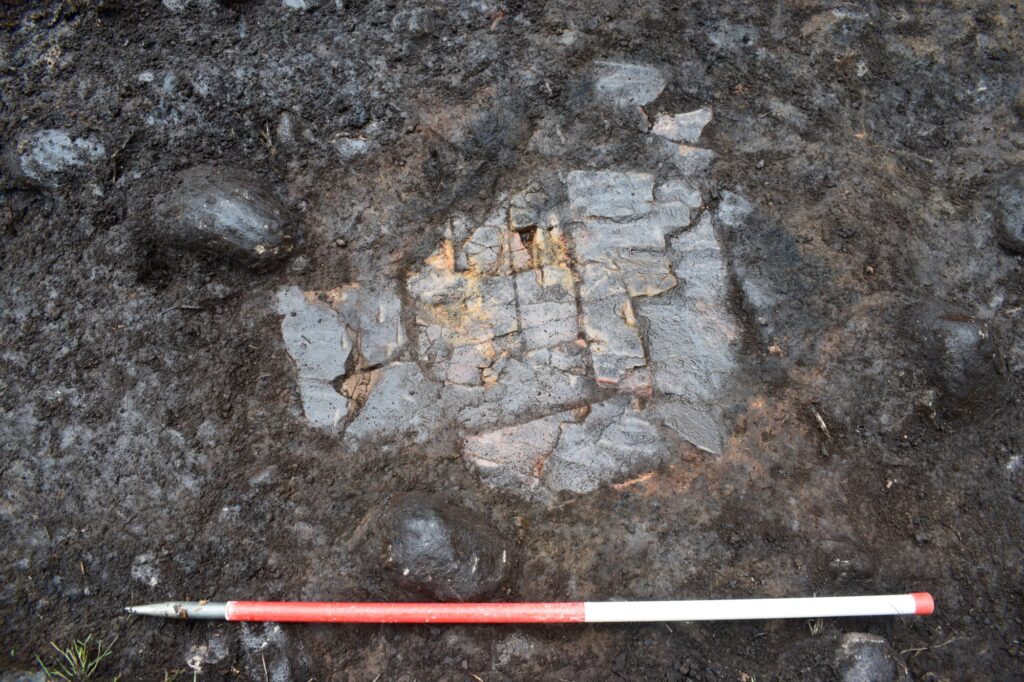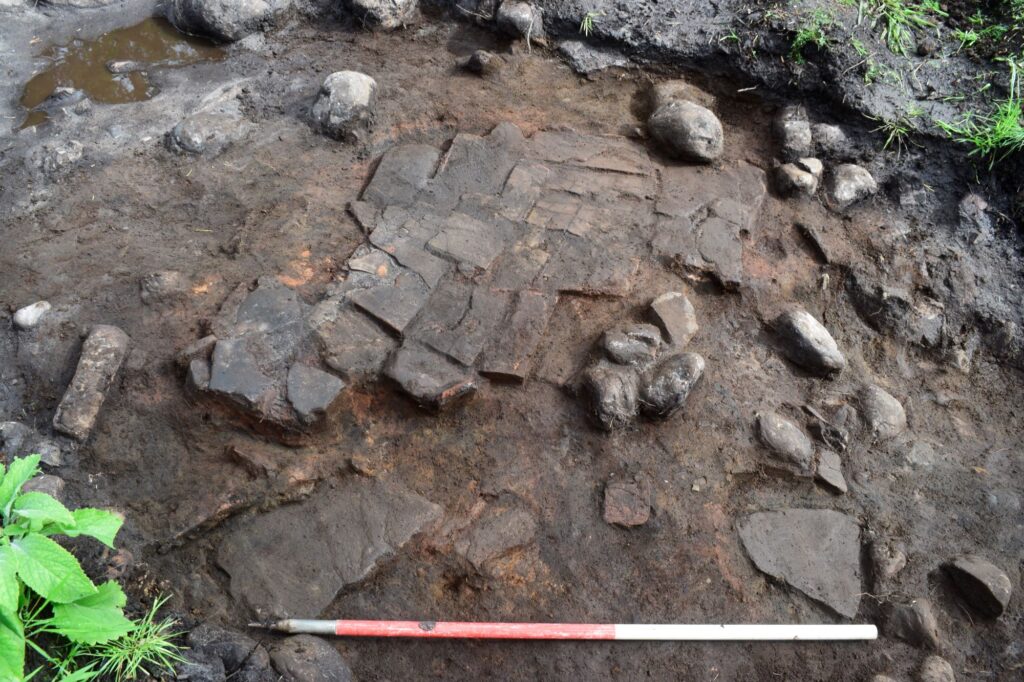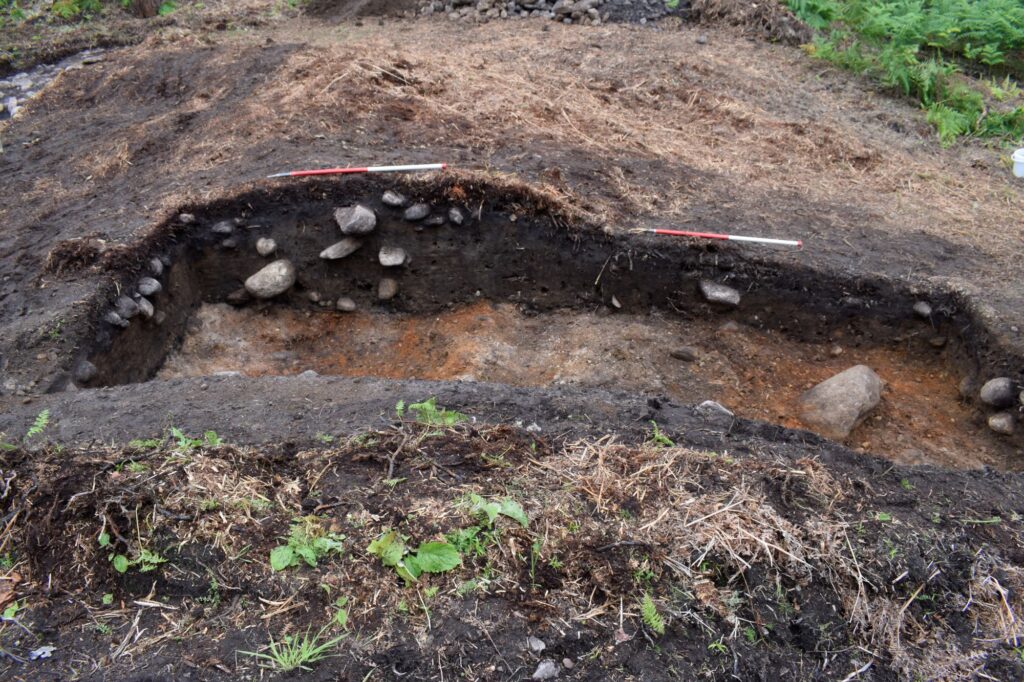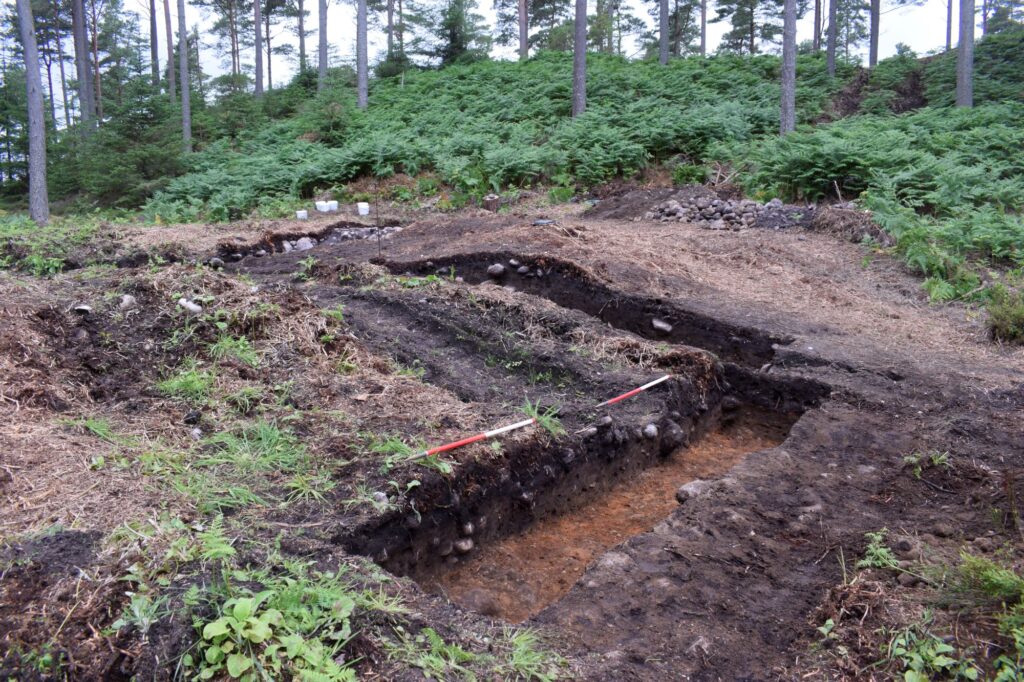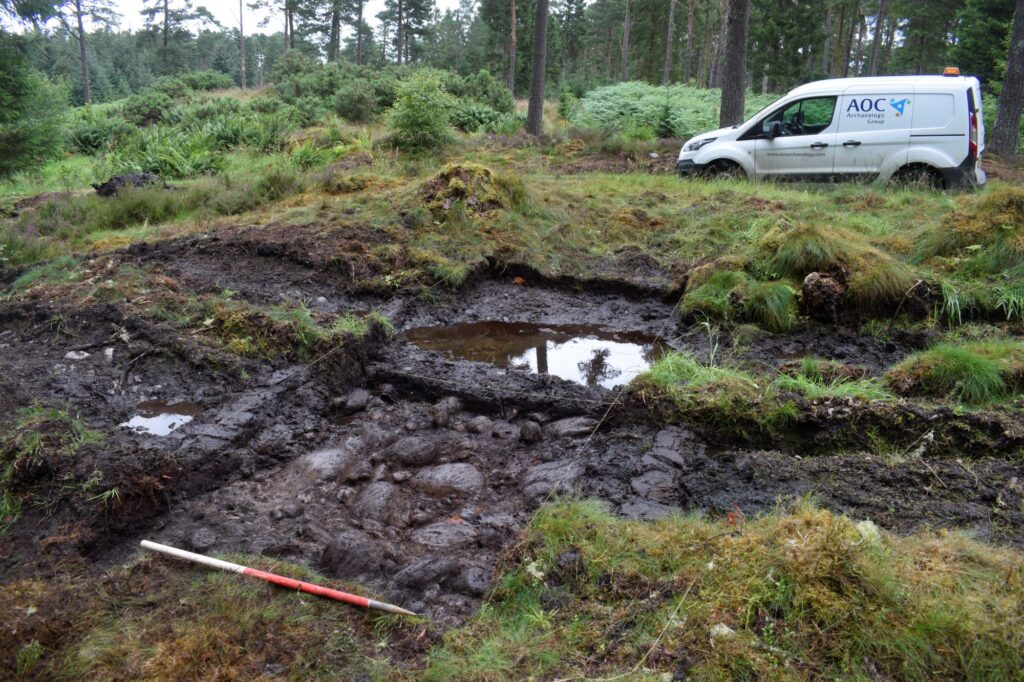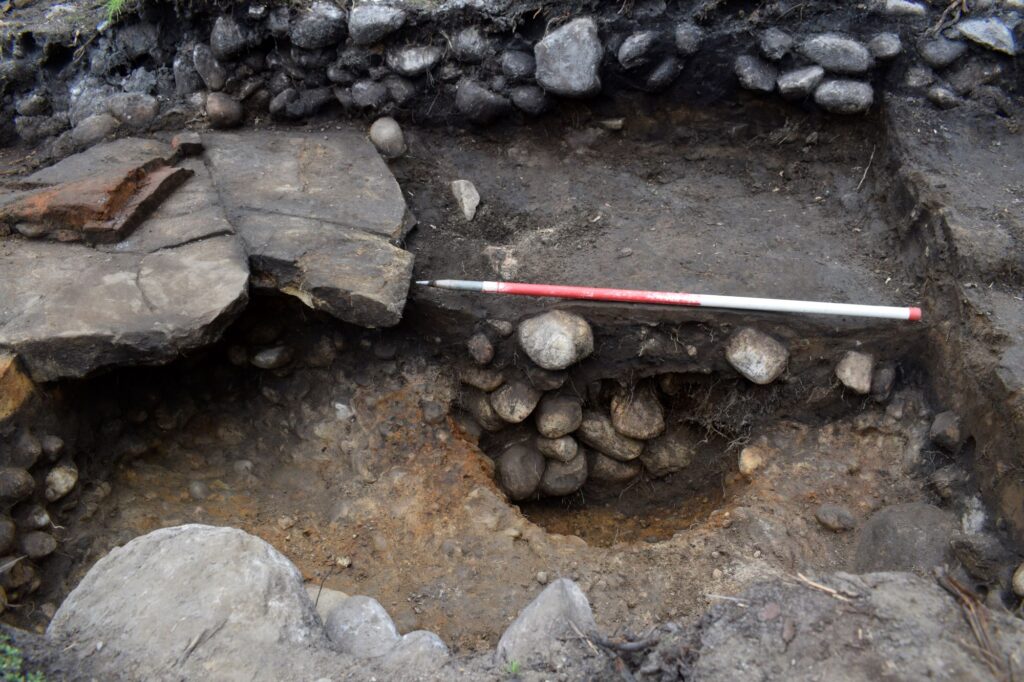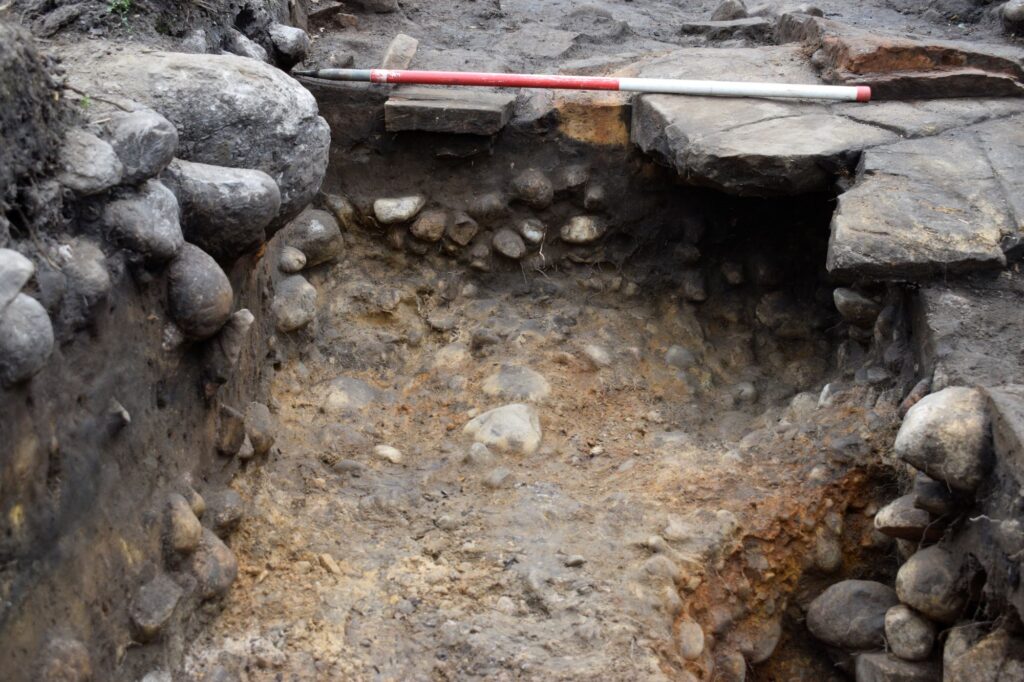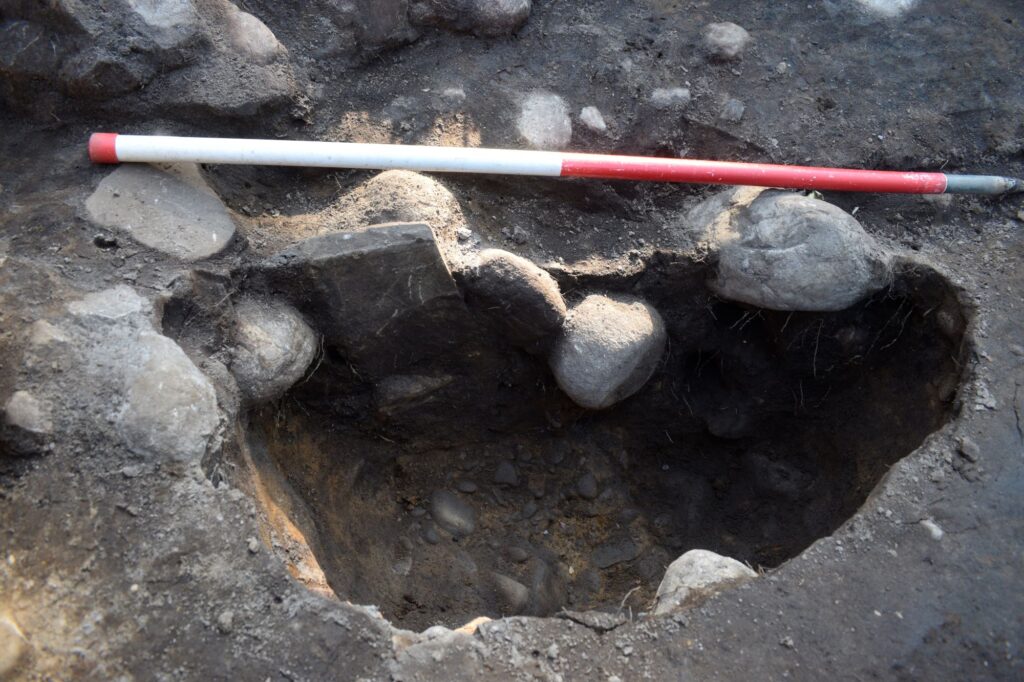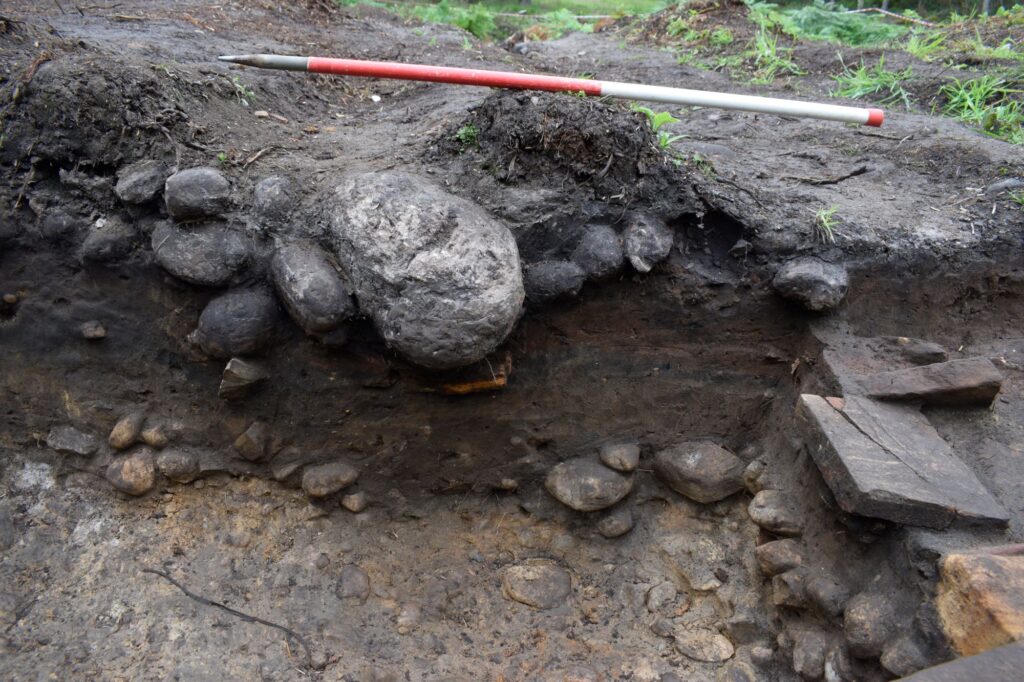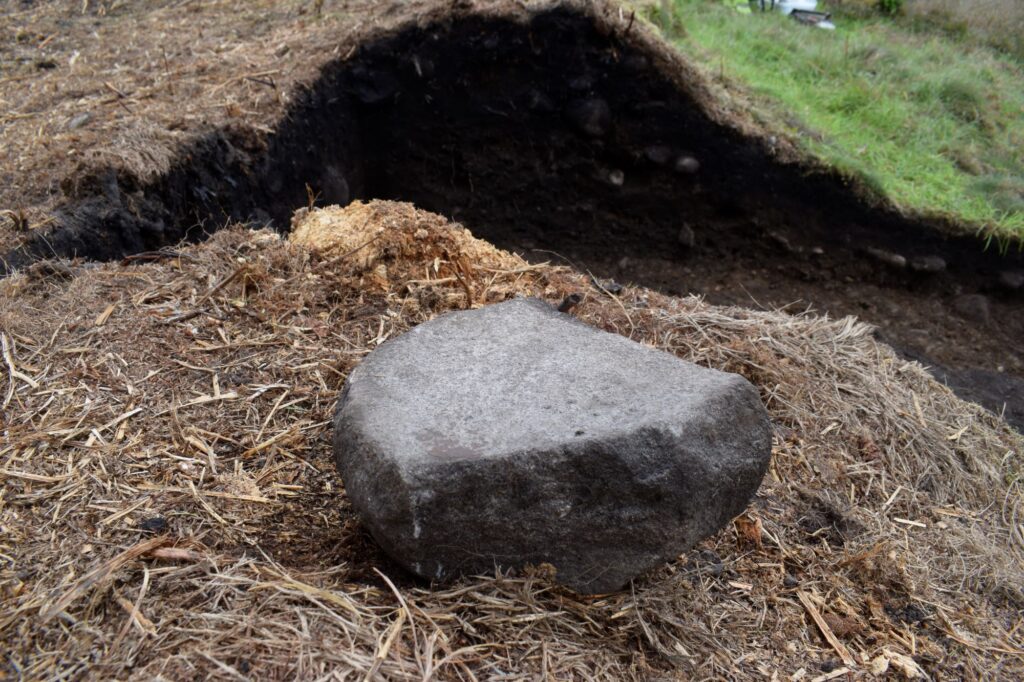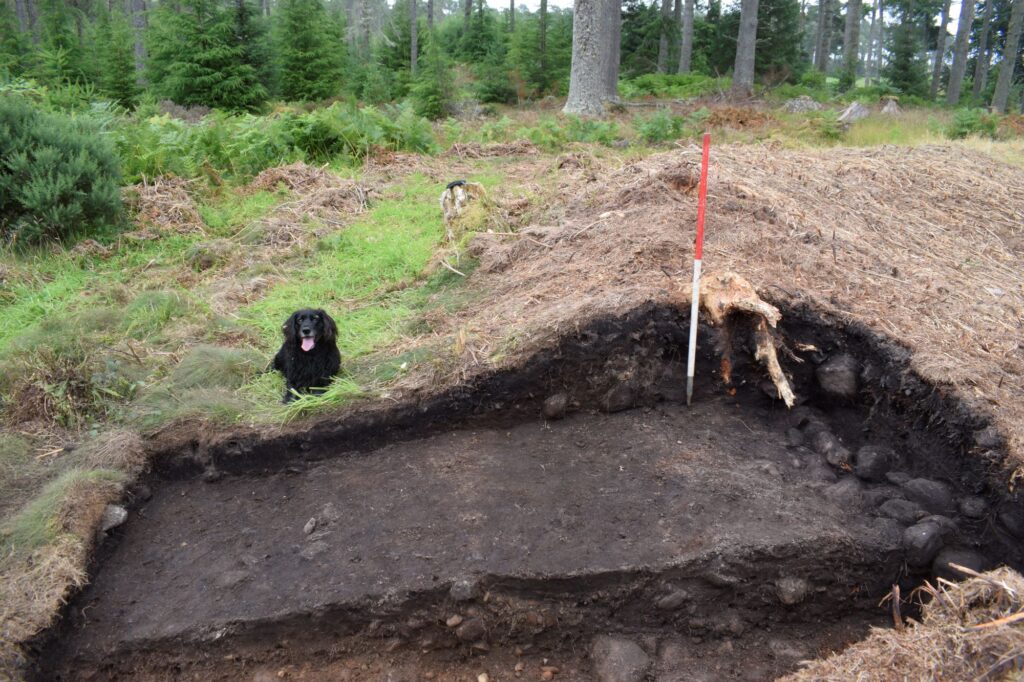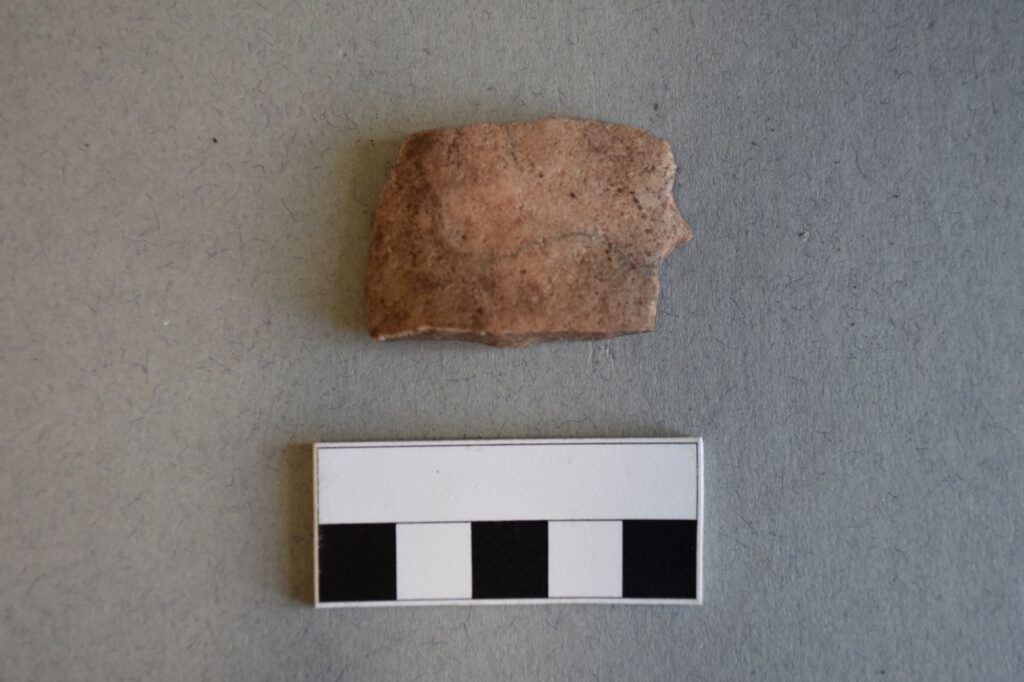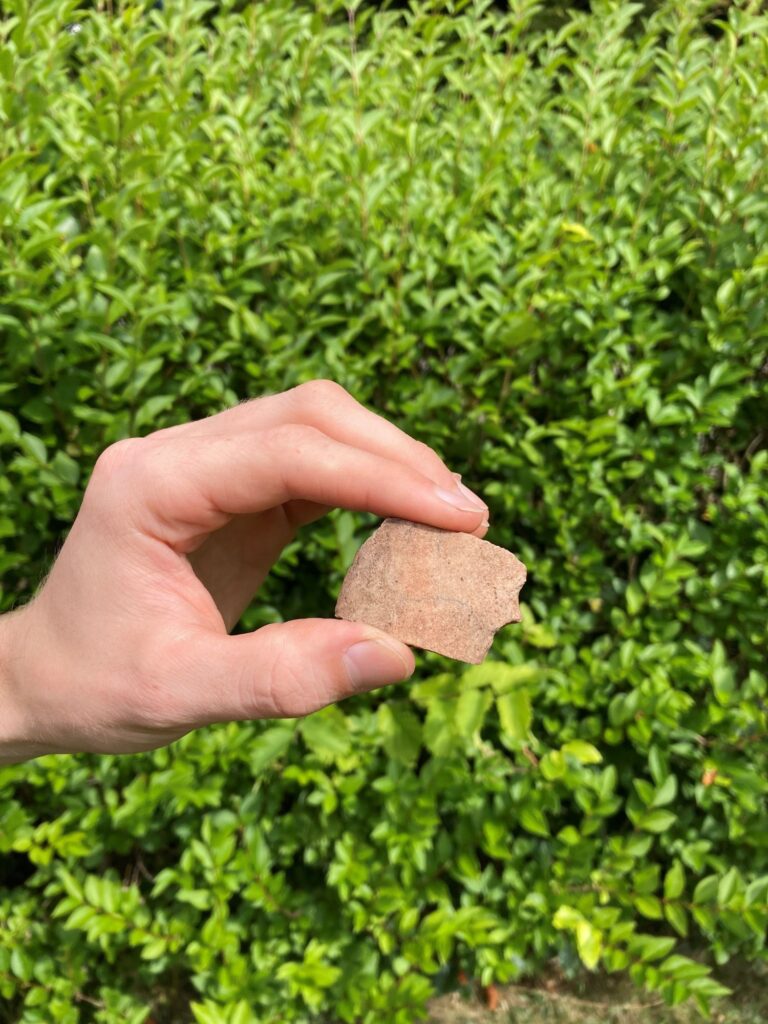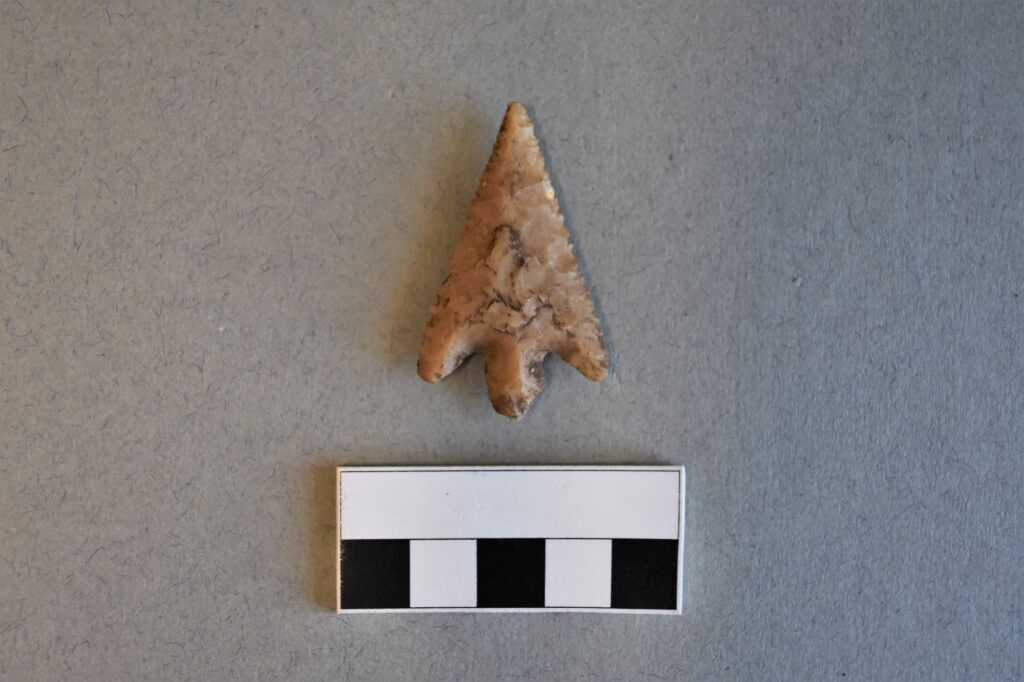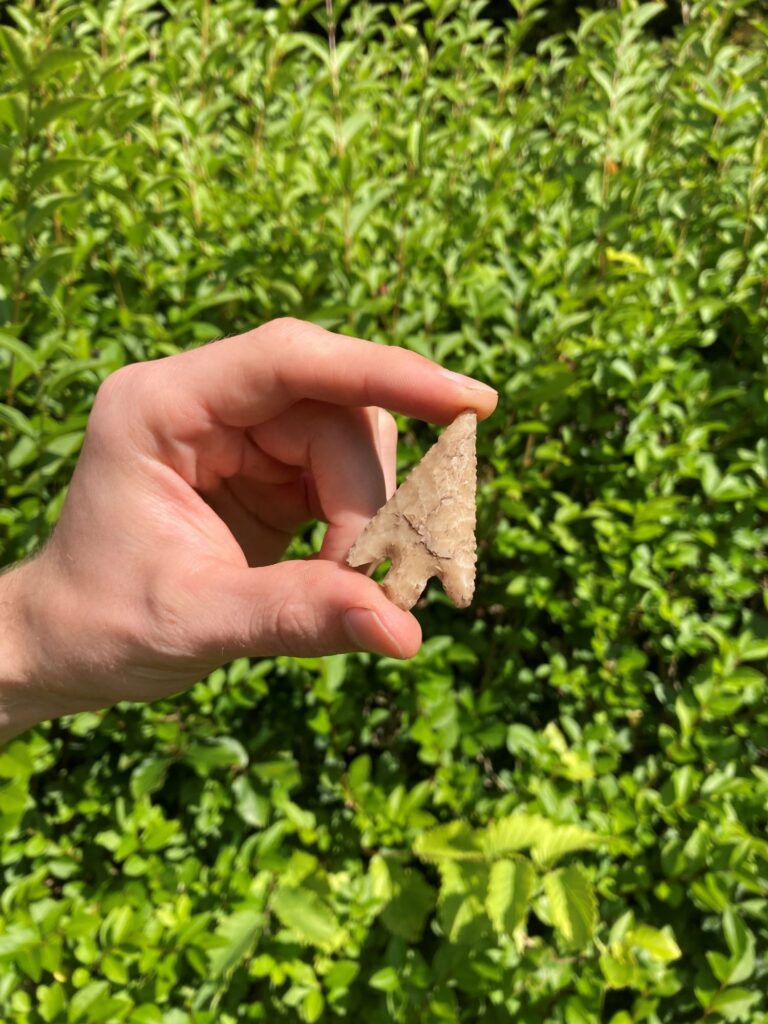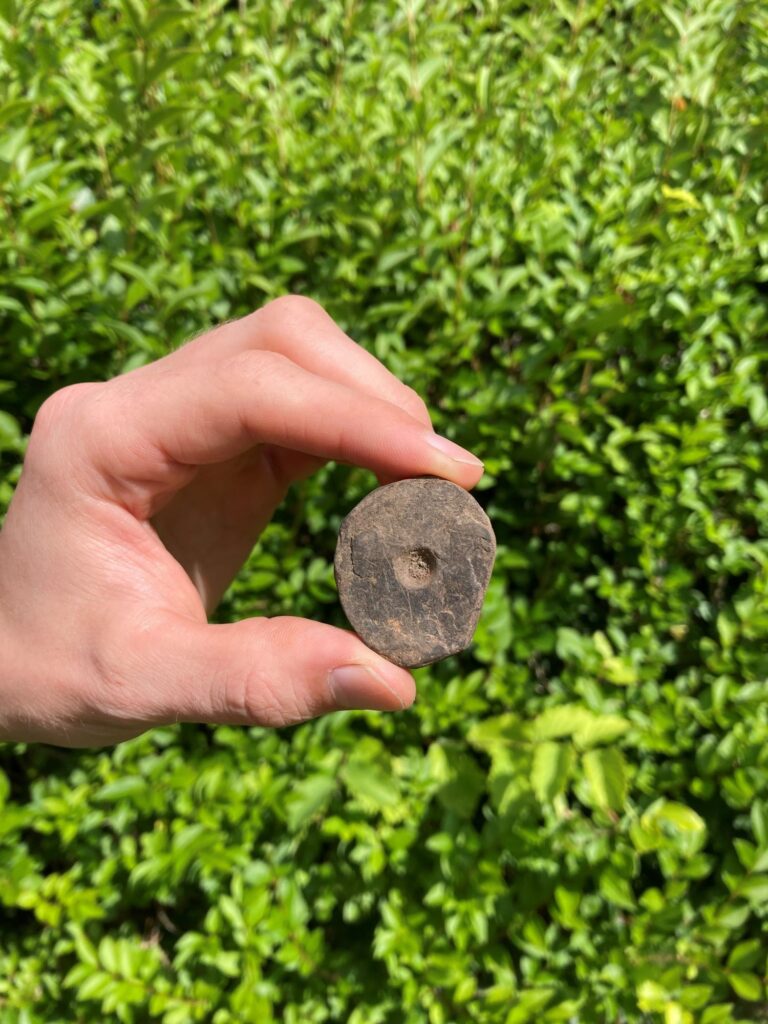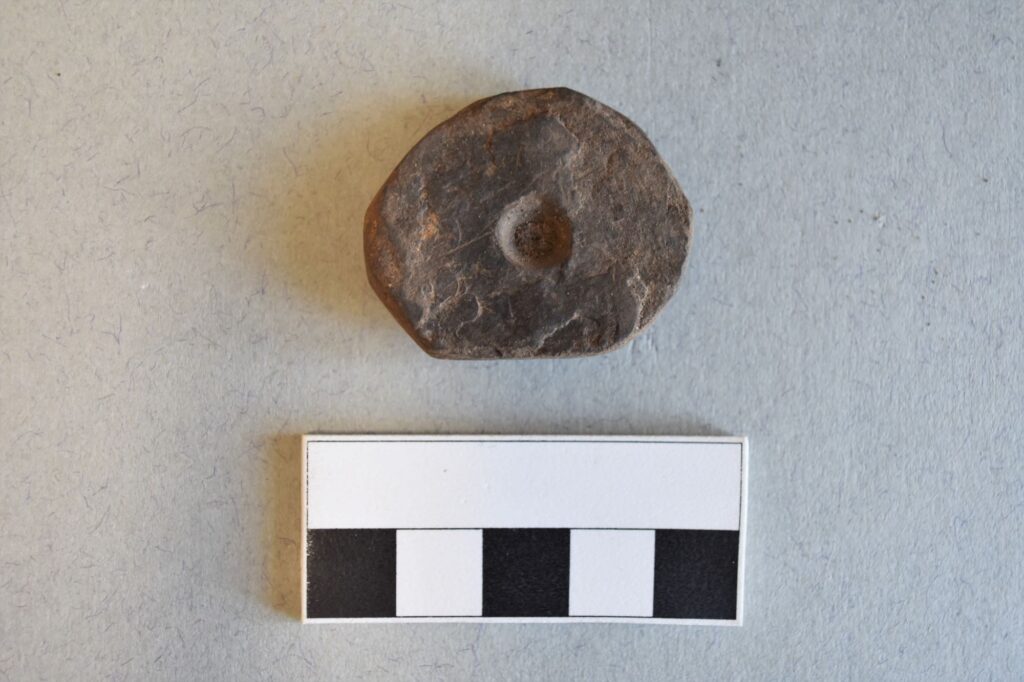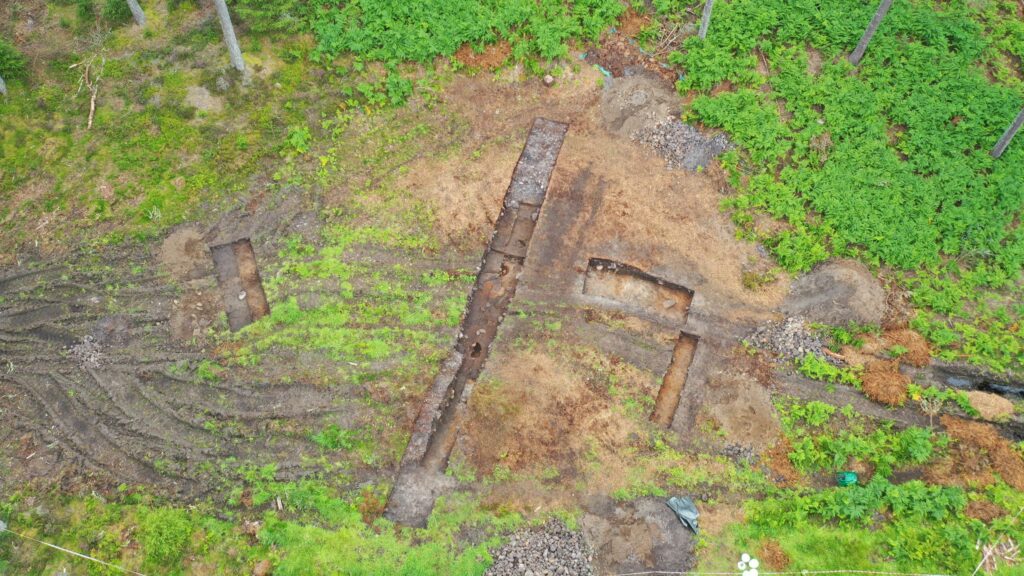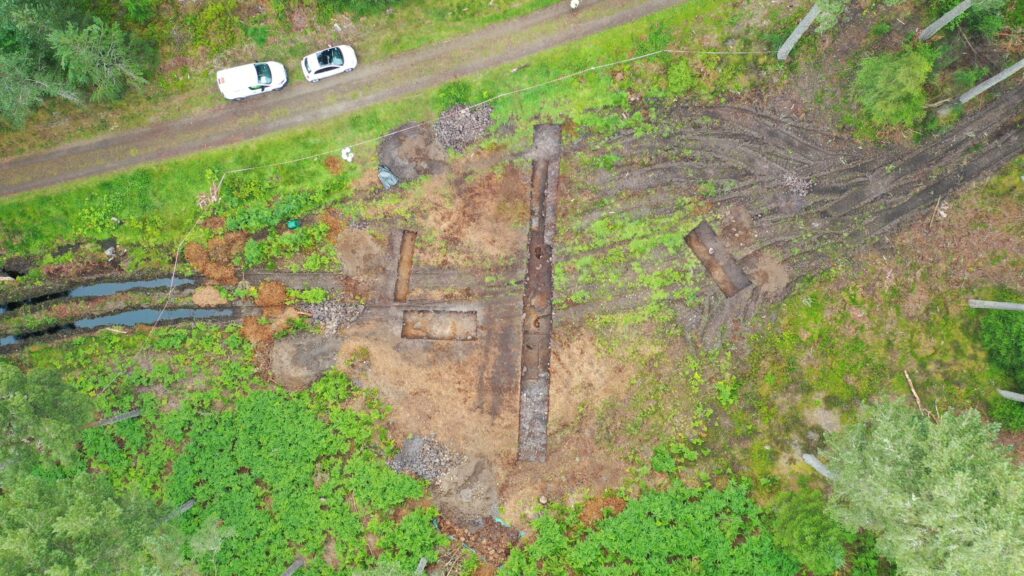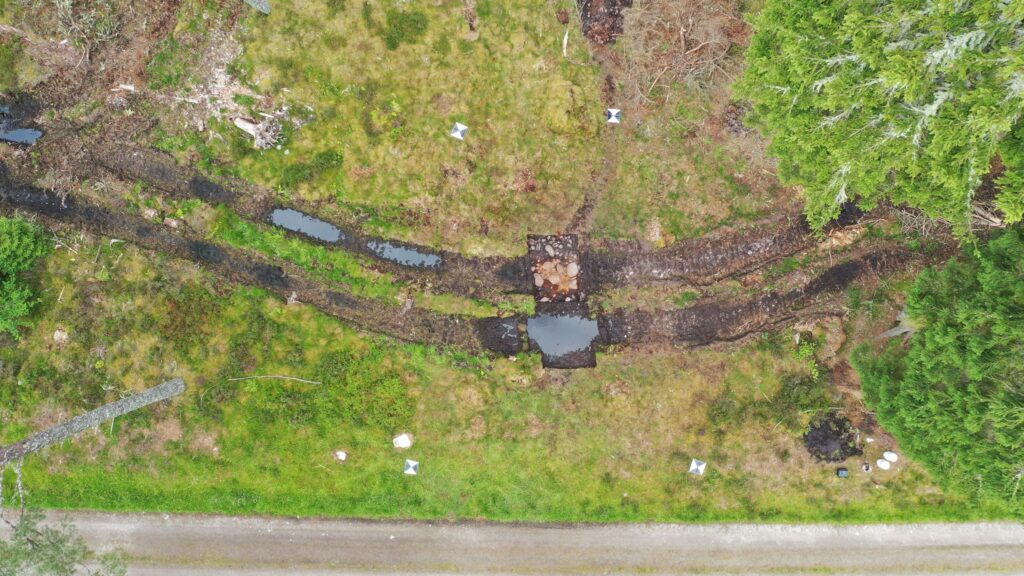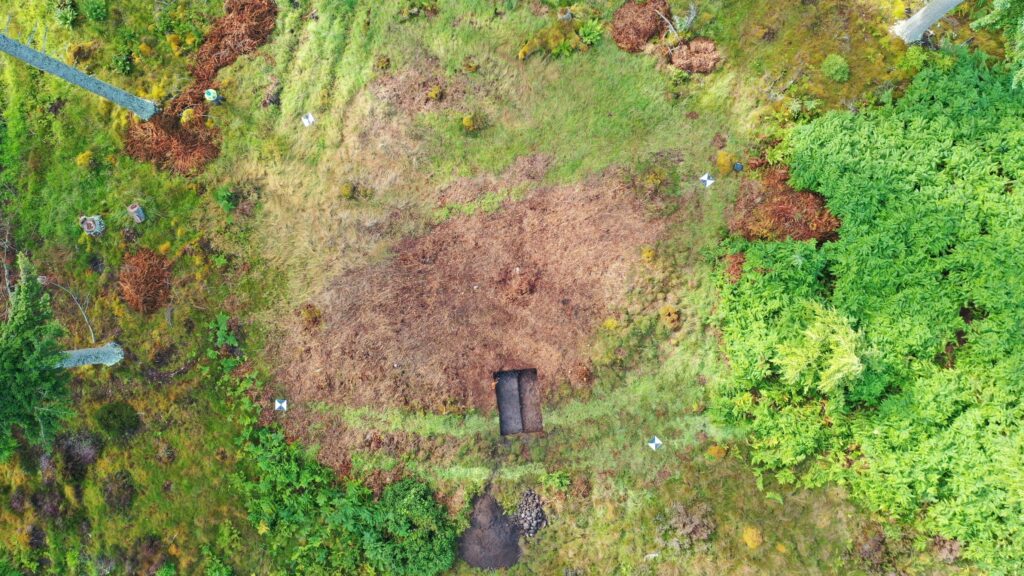Within the forestry plantation of Camore Wood, near Dornoch, a prehistoric settlement of at least 20 hut circles lies hidden within the woods. Excavations over the summer of 2023 at three of the hut circles provided a unique glimpse into the structures and the artefacts left behind by their prehistoric inhabitants.
The works were undertaken on behalf of Forestry and Land Scotland.
Camore Wood settlement comprises a large group of prehistoric hut circles located within a forestry plantation near Dornoch. Most of the roundhouses survive within forest clearings as circular structures built with turf and stone banks, some sitting on top of raised mounds. Today, the settlement is mostly hidden amongst the trees, but when it was occupied, we can imagine there would have been intervisibility between the houses and other nearby monuments, such as the Chambered Cairns of Davochfin and Evelix and Drumdivan Standing Stone.
House Hunting
Part of the recent archaeological works at Camore Wood involved the recording and mapping of all known hut circles within the forest. To the untrained eye, the structures can be difficult to spot, especially when they are enclosed by trees or overgrown by thick bracken. Walkover survey across the woods, using historic maps and previous survey records to aid navigation, was able to find 20 structures from the prehistoric settlement, ranging from single hut circles to the impressive foundations of double and even triple roundhouses.
Explore the map below to discover the houses for yourself. Click and drag to move the map or use the controls to zoom in and out. Click a point of interest or image to start the guided tour.
Roundhouse Excavations
Recent damage to the roundhouses provided a unique opportunity to investigate three of the hut circles in more detail. Six trenches were positioned across Sites 1, 2 and 3, each targeting different features of the roundhouses and their surroundings. Although the excavations were small in size, they uncovered structural elements, occupation deposits, and artefacts, including an incredible flint arrowhead. Radiocarbon dates obtained from Site 1 show that the hut circle was inhabited during two periods: the Mid Bronze Age (1700-1400 BC) and the Mid Iron Age (400-50 BC).
Site 1
Site 1 provided the most insight into the prehistoric occupation, with intercutting and overlapping floor layers, postholes and hearths from different phases of activity. The earliest occupation deposits lay directly over the natural subsoil, indicating the house site had been cleared before construction. Two distinct floor or occupation surfaces were spread across the interior of the house. Both contained animal bone and charcoal fragments that had likely been trampled into the floors during day to day activities. Radiocarbon dating of organic material from the two layers indicated the lower originated in the Bronze Age and the upper in the Iron Age.
Specialist analysis of the charred seeds and charcoal from the floor layers showed that both Bronze Age and Iron Age occupants were making use of cereal crops, such as hulled barley, as well as other food resources, such as hazelnut shells and blackthorn fruits. The charcoal within the deposits came from the burning of wood or turfs for fuel, with local native species such as oak, alder, heather, hazel, pine, birch and blackthorn represented.
Use your mouse to explore the 3D model of the excavation or click through the numbers for a guided tour.
Heart of the Home
Overlapping slab hearths were uncovered at the centre of Site 1. The upper (later) hearth consisted of small heat-cracked slabs and was surrounded by a burnt deposit. Below it, lay the earlier hearth, formed by large, reddened slabs set within a ring of smaller stones. And below that lay a large pit measuring 1m across and containing burnt bone. This area would have been the heart of the home, providing light and warmth and acting as the centre of daily activities, such as cooking.
The lowest hearth pit appears to be Bronze Age in origin, based on radiocarbon dating of organic material from within it. The two upper slab-built hearths relate to the Iron Age occupation deposits, suggesting that the hearth was rebuilt at least once during the Iron Age.
use your mouse to explore the 3D models of the artefacts⚬
use your mouse to explore the 3D models of the artefacts⚬
use your mouse to explore the 3D models of the artefacts⚬
use your mouse to explore the 3D models of the artefacts⚬
use your mouse to explore the 3D models of the artefacts⚬
use your mouse to explore the 3D models of the artefacts⚬
use your mouse to explore the 3D models of the artefacts⚬
use your mouse to explore the 3D models of the artefacts⚬
Barbed and Tanged Arrowhead
The incredible find of a barbed and tanged flint arrowhead came from one of the floor layers inside Site 1. The arrowhead is a Kilmarnock Type N, a style which occurs almost entirely within Early or Middle Bronze Age contexts in Scotland. It would have taken a skilled craftsperson to create the serrated edges. Finds of small objects can be rare on prehistoric roundhouse sites, as people would have taken most things with them when the houses were abandoned. It is possible that this arrowhead was accidentally lost, however, it may also indicate a deliberate deposit linked to the abandonment of the house.
Shale Roughout
A partly perforated shale disc was found within the floor layers of Site 1, forming what may be a ring pendant in the process of being shaped. The central hole is only visible on one side and the disc still has an overall angular oval shape. Abrasion marks around the edges suggest that the disc was in the process of being smoothed and shaped into a circle. One face of the object is badly chipped, which may be the reason that this object was never finished.
Site 2
Site 2 was smaller than the other investigated hut circles and also contained only very shallow and sterile archaeological deposits. This may indicate that survival of material was much poorer at this site or, more likely, that this structure was not used as a dwelling but for other more ephemeral activities.
Use your mouse to explore the 3D model of the excavation or click through the numbers for a guided tour.
Site 3
Only a tiny portion of Site 3 was investigated, revealing part of the turf-constructed wall, which was stone lined on the interior. Interestingly, a fragment of a saddle quern, a tool used for grinding grain, was found in the wall. The broken tool was probably deliberately included in the construction as a symbolic act. It is likely that this was a similar style of dwelling to Site 1 and excavation of the interior may reveal features such as floor deposits, postholes and hearths.
Use your mouse to explore the 3D model of the excavation or click through the numbers for a guided tour.

